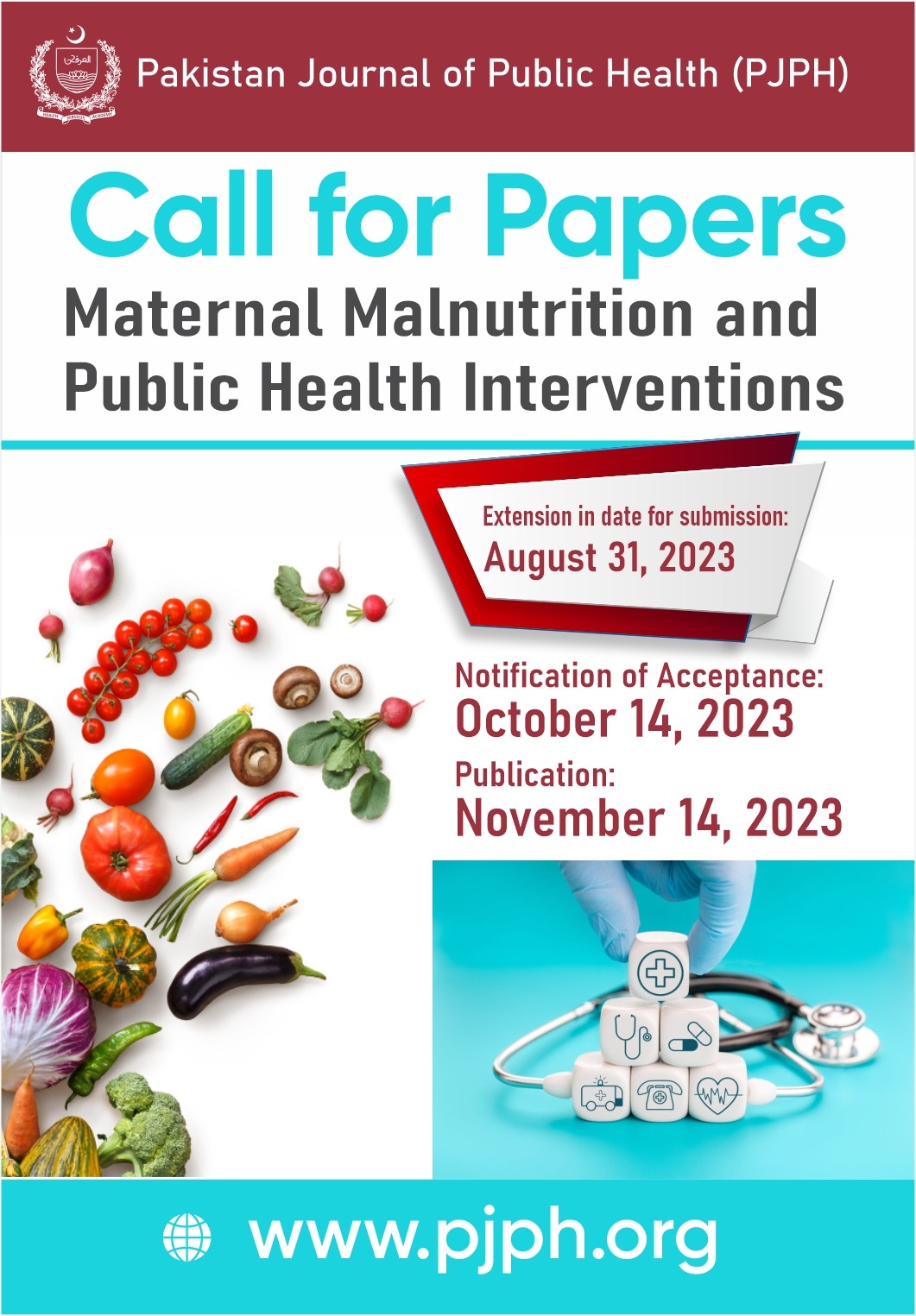Tracking Pakistan’s Progress Towards Universal Health Coverage: An Empirical Assessment of Summary and Tracer Indicators and Their Associated Inequities (2001-14)
DOI:
https://doi.org/10.32413/pjph.v10i1.434Keywords:
Universal Health Coverage, Pakistan, Equity, Health Systems, MonitoringAbstract
Background: This study’s main objective was to examine the progress of provinces towards UHC using several tracer indicators (six for health service coverage and two for financial protection) from 2001 to 2014 and to assess inequities within provinces due to place of residence and economic status.
Methods: For elaborate tracking, inequities were assessed for each indicator based on average annual rates of change and percentage changes in the gap between sub-population groups. For policy makers, spider radar graphs were generated to demonstrate UHC status in 2014, and a composite UHC index was created to show trends from 2001-14. Four Household Integrated Economic Survey data sets (2001-02, 2004-05, 2010-11, 2013-14), each with a sample size of about 15,000 households, were used for the analysis.
Results: Overall, all four provinces made progress in their UHC index values over the study period. Coverage for most of treatment indicators remained below 70% and inequities existed among sub-population groups. Coverage of financial protection indicators remained above 90% for all the provinces across study duration and no substantial differences were found between and within provinces.
Conclusion: Simultaneous monitoring of both dimensions of UHC enabled the authors to comment on the holistic picture of UHC status and data blind spots, and to avoid inappropriate interpretations about a single dimension. Higher level of financial protection with limited health services coverage was most likely due to non-utilization of health services and/or unmet health needs. The findings will likely serve as a baseline for tracking progress towards UHC at the sub-national level in the country.
Downloads
Published
Issue
Section
License
Copyright (c) 2020 Pakistan Journal of Public Health

This work is licensed under a Creative Commons Attribution-NonCommercial 4.0 International License.






